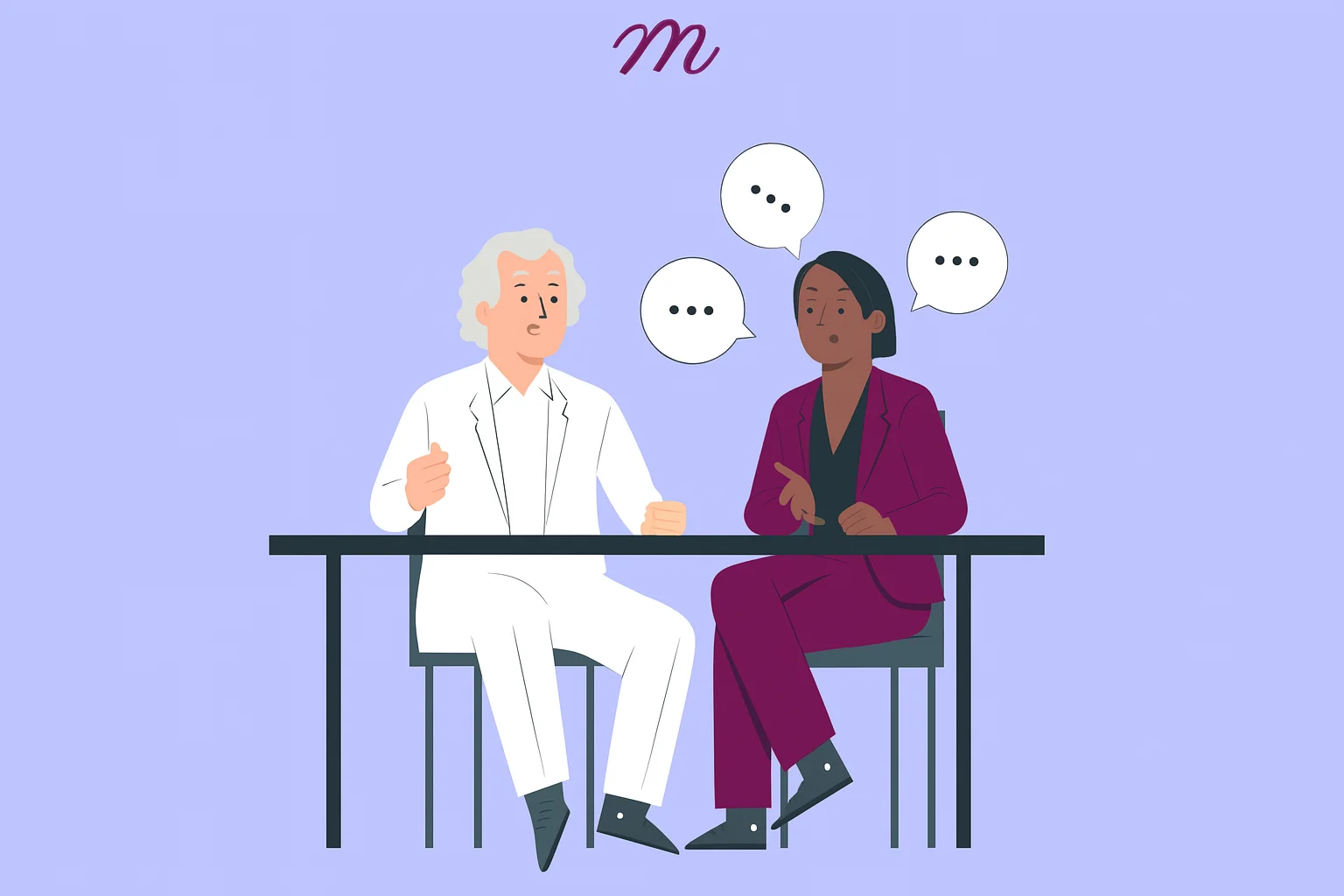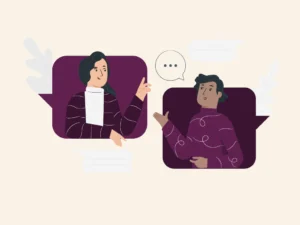Talkative clients are clients who talk endlessly, fill every silence, and bounce between topics without taking a breath. These talkative clients create special challenges in the therapy room. Good strategies can help sessions be productive while still respecting their way of communicating.
This article will examine why some clients talk so much, practical ways to handle verbose clients, and techniques to keep therapy effective when time seems to disappear under a flood of words. By understanding what drives excessive talking and using thoughtful approaches, therapists can turn potential frustration into valuable therapeutic work.
Why Some Clients Talk Excessively
Understanding why clients talk too much helps therapists respond better and create better plans. Excessive talking usually happens for a reason – it serves some purpose for the client that needs understanding, not frustration.
Anxiety and Nervous Energy
For many clients, talking serves as a way to manage anxiety. The therapeutic setting itself can trigger nervousness, especially during initial sessions when clients feel uncertain about expectations. Filling silence becomes a defense mechanism against uncomfortable feelings. These clients may speak rapidly, jump between topics, or elaborate excessively on minor points, all in service of keeping anxiety-provoking silence at bay.
One therapist described a client who arrived at each session with a mental list of topics to cover, speaking almost without breathing for the first fifteen minutes. When gently asked about this pattern, the client admitted feeling “terrified of what might come up” if she allowed silence to exist in the room.
Need for Validation
Some clients use excessive talking as a bid for attention and validation. Years of feeling unheard in personal relationships may manifest as a determination to be fully heard in therapy. These clients often repeat stories, add excessive detail, and resist interruption—behaviors born from fear that their experiences won’t be properly acknowledged unless thoroughly explained.
Avoidance of Deeper Issues
Talking can function as an avoidance strategy. By keeping conversation at a surface level or constantly shifting topics, clients can effectively prevent exploration of painful emotions or threatening insights. A flood of words becomes a protective barrier against vulnerability.
A classic example is the client who spends entire sessions describing conflicts with coworkers in exhaustive detail but never connects these stories to patterns in other relationships or underlying emotional needs.
Thought Disorders and Tangential Thinking
In some cases, excessive talking reflects genuine difficulties with organizing thoughts. Clients with certain mental health conditions may struggle with tangential thinking or flight of ideas, making it challenging to maintain focus during therapeutic conversations.
Cultural and Personal Communication Styles
It’s crucial to remember that norms around verbal expression vary significantly across cultures and individuals. What feels excessive to one therapist might simply reflect cultural patterns valuing elaborate verbal expression or storytelling traditions. Some families and communities prize detailed communication and view brevity with suspicion.
Challenges of Managing Talkative Clients
Dealing with super talkative clients creates real headaches for therapists. Let’s look at what makes these sessions tough.
Time Problems
The biggest issue? Time. When clients will not stop talking, you can not get a word in to guide them, give feedback, or try therapeutic techniques. Before you know it, the session is over and you have barely addressed what matters.
Cannot Stay on Topic
Chatty clients tend to bounce around between topics. One minute they are discussing work stress, the next a childhood issue, then their weekend plans. Therapists can end up feeling pulled in ten directions at once, never digging deep enough into anything. Progress feels slow.
It Can Be Exhausting
Being on the receiving end of constant talking demands significant mental energy. Therapists must simultaneously listen for relevant content, track patterns, plan interventions, and manage their own reactions. This high-attention state can leave therapists mentally exhausted, even affecting their next appointments.
Damages Your Connection
When therapists are secretly frustrated but do not address it, things get messy. Resentment builds up. Even if nothing is said, clients can tell when you are annoyed, and that hurts your relationship with them. Before long, they might not trust you enough to do the real work.
Assessment Delays
Try getting through an intake form with someone who turns every yes/no question into a twenty-minute story! You need specific information during assessments, but talkative clients make it very difficult. Furthermore, it can delay proper diagnosis and throw off the whole treatment plan.
Tips to Handle Overly Talkative Client
Managing talkative clients requires balancing respect for their communication style with the need for productive therapeutic work. These strategies can help you navigate this balance effectively.
Set Clear Session Structure
Establishing a session outline can provide useful restraint for verbose clients. Begin each session by collaboratively setting an agenda with clear priorities. In this way, both therapist and client have a roadmap to follow, and if this roadmap is not followed, the redirection of the conversation is expected by the client, cushioning the client from the negative feelings that the redirection of the discussion may generate.
“Today we have several things to discuss: your medication adjustment, the conflict with your daughter, and practicing the mindfulness technique we started last week. Which feels most important to start with?”
This approach respects client autonomy while creating natural transition points for guiding conversation.
Use Gentle Interruption Techniques
Many therapists feel uncomfortable interrupting clients, viewing it as disrespectful. However, therapeutic interruption—done properly—can actually show engagement rather than dismissal. The key lies in how interruptions are framed.
Effective techniques include:
- Using hand gestures coupled with verbal cues: “If I could pause you for a moment…”
- Acknowledging the importance of what’s being said before redirecting: “That’s an important point, and I want to make sure we explore what you just mentioned about your father.”
- Normalizing the interruption: “I’m going to jump in here because I notice something significant in what you’re describing.”
Implement Strategic Silence
Strategic silence creates space for reflection and helps talkative clients develop awareness of communication patterns. After a client finishes a thought, deliberately wait several seconds before responding. This seemingly simple technique often feels uncomfortable for clients accustomed to filling every moment with words, but it gradually helps them tolerate reflective space.
One therapist found success by explaining this approach directly: “I’ll sometimes leave space after you finish speaking. This isn’t because I’m not engaged, but because I want to give both of us a moment to process what’s been said.”
Provide Feedback About Communication Patterns
When appropriate, gently bring attention to communication patterns as part of the therapeutic work. This metacommunication helps clients develop awareness without shame.
“I’ve noticed that you tend to give a lot of detail when describing difficult interactions. I wonder if this helps you feel confident that I understand you completely, or do you think it serves another purpose for you?”
By framing observations as curious inquiries rather than criticisms, therapists invite clients to explore their patterns.
Use Written Exercises
Incorporating written exercises can provide helpful structure for verbose clients. Beginning sessions with brief written reflections allows clients to practice expressing themselves within limits, which can then be carried over into conversation.
Homework assignments involving journaling or structured writing exercises extend therapeutic work beyond sessions while developing clients’ capacity for focused self-reflection.
Schedule More Frequent, Shorter Sessions
For some particularly verbose clients, the standard 50/60-minute session may not be optimal. Consider offering more frequent but shorter sessions (30-40 minutes), which naturally creates tighter containment and may reduce pressure clients feel to “fit everything in.”
Address the Pattern Directly When Necessary
When other strategies do not work, directly addressing the communication pattern becomes necessary. This requires tact but can be therapeutic when done and framed constructively.
“I have noticed that in our sessions you often share a lot of details about recent events, which shows a great deal of confidence that I value. However, I am concerned that we very rarely have time to move from describing situations to exploring how they affect you emotionally or working on the changes you have said you want to make. How might we possibly balance being able to express yourself and tell what you want to tell with these other important aspects of therapy?”
Note-Taking Strategies for Sessions with Talkative Clients
Taking good notes becomes crucial when working with clients who talk non-stop and share tons of information. Here are some strategies for managing that:
Use AI-Powered Note-Taking Support
For therapists drowning in information from talkative clients, Mentalyc offers a game-changing solution. This specialized note-taking software helps capture essential details without the frantic scribbling. Mentalyc’s smart features can identify key themes and patterns in client narratives, saving precious time while ensuring nothing important gets missed.
Create Your Own Shorthand
Develop a quick writing system that grabs the important stuff without writing full sentences. Use symbols for common themes, abbreviate frequent words, and mark significant statements with asterisks or underlines. This helps you keep up when clients won’t slow down.
Look for Patterns, Not Every Detail
Do not try to write down everything they say – it is not realistic. Instead, focus on spotting patterns, themes, and emotional undercurrents. Note when relationship problems sound familiar, when they avoid certain topics, or how they react emotionally across different stories.
Organize Visually
Try mind-mapping or dividing your notes into sections that separate different aspects of what the client shares. This visual approach helps you quickly spot connections between topics that initially seemed unrelated. Mentalyc’s visual organization features can enhance this process, automatically clustering related content.
Capture Their Exact Words
When clients say something particularly revealing or important, write down their exact words. These authentic phrases provide gold for future sessions, letting you bring their own language back at just the right moment.
Make Time to Review
Block out 10-15 minutes between clients specifically to review your notes from talkative sessions. This quick review helps you spot themes that might get lost in the moment.
Rambling in therapy
Rambling—speech characterized by tangential thinking, loose associations, and lack of clear direction—presents specific challenges distinct from general talkativeness.
Distinguishing Between Rambling and Detailed Communication
Not all extensive talking constitutes rambling. Some clients communicate through detailed narratives that eventually arrive at meaningful points. True rambling involves disconnected thoughts, tangential associations, and failure to maintain a coherent thread.
Learning to distinguish between these patterns helps therapists respond appropriately, containing actual rambling while respecting detailed but organized communication styles.
Potential Clinical Significance
Rambling sometimes indicates underlying clinical issues requiring attention. Pressured speech might suggest mania or hypomania, while tangential thinking could reflect thought disorders associated with psychotic conditions. Disorganized rambling may also appear during dissociative states or with certain neurological conditions.
Assessing whether the speech is simply lengthy or if there is a major problem such as these mentioned above can help clients receive the appropriate support.
Specific Interventions for Rambling
These techniques can help create structure for rambling:
- Reality anchoring through environmental grounding: “Let’s pause and notice three things we can see in this room right now.”
- Reflective summaries that consolidate scattered thoughts: “You’ve mentioned several things—your mother’s criticism, feeling inadequate at work, and concerns about your relationship. These all seem connected to a feeling of not being good enough.”
- Written prompts that provide concrete focus for verbal responses
My Personal Experience with a Talkative Client
I will never forget working with a woman who came to therapy after her husband died. In our first few sessions, she talked non-stop. She described her daily routines in excruciating detail, went through her husband’s entire medical history, and gave me what felt like her complete family tree – all without taking a breath.
After about a month, I realized what was happening. All this talking was covering up grief she could not face. The words were a shield against feelings that felt too big to handle.
I did not try to shut her down. Instead, we made a deal. Each session would start with 15 minutes of “free talking time” where she could share whatever she wanted. Then we would shift to more focused work. By honoring her need to talk while setting some boundaries, we slowly made progress.
The breakthrough came during a rare quiet moment. She looked at me and said simply, “I keep talking because when it’s quiet, I remember he’s gone.” That honest moment opened the door to real grief work that her constant talk had been blocking.
This taught me something important. Sometimes all that talking is protecting clients from pain they are not ready to feel. When we respect that defense while helping them need it less, real healing can happen.
Some Final Thoughts
Working with talkative clients requires a careful balancing act. Therapists must respect each client’s communication style while guiding them towards meaningful change. By understanding the reasons for excessive chatter, applying structure during sessions, and managing personal frustrations, you can transform even the most difficult interactions into productive ones.
It is important to remember that behind the words there is a person seeking connection and support. With patience and the right approach, even the most talkative clients can learn that sometimes the spaces between words are the most important. True healing occurs when talking becomes authentic communication.
Resources
- Andreasen N. C. (1979). Thought, language, and communication disorders. I. Clinical assessment, definition of terms, and evaluation of their reliability. Archives of general psychiatry, 36(12), 1315–1321. https://doi.org/10.1001/archpsyc.1979.01780120045006
- Giroldi, E., Veldhuijzen, W., Dijkman, A., Rozestraten, M., Muris, J., van der Vleuten, C., & van der Weijden, T. (2016). How to gather information from talkative patients in a respectful and efficient manner: a qualitative study of GPs’ communication strategies. Family practice, 33(1), 100–106. https://doi.org/10.1093/fampra/cmv094
- Reddit user. (2022, July 11). How do you deal with overly talkative clients where you can’t get a word in? [Online forum post]. Reddit. https://www.reddit.com/r/therapists/comments/vwqjsp/how_do_you_deal_with_overly_talkative_clients/
Why other mental health professionals love Mentalyc

“It’s really giving me some good confidence … and areas of improvement to see nuances I didn’t see before.”

“There is a lot more feedback and suggestions in it than before … that makes things a little bit easier for me.”

“It keeps me on a level of assessment about the relationship that has a little bit more objectivity … helps keep me grounded.”

“Using Alliance Genie has really improved my notes … It tells me what I’m doing and gives me an approach of what’s next.”







